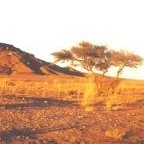Has Anyone Been To Angkor Wat
-
Recently Browsing 0 members
- No registered users viewing this page.
-
Topics
-
-
Popular Contributors
-
-
Latest posts...
-
64
Report Canada to Recognise Palestinian State, Following France and UK
So where do you want this recognised state to be? are you in favour of the dissolution of Syria? They had a state called Gaza, looked how they messed that up -
40
Report Cambodia Nominates Trump for Nobel Peace Prize
How was Trump ordered to pay a lot of money to a lady he fooled around with in a shop changing room...........? 🤔 -
23
Report Trump Deploys Nuclear Subs Amid Russia Tensions
Yeah, right. From ‘president no new wars’ to president who started WWIII, more likely. Aren’t you the people who claimed Trump wouldn’t start any new wars? So far he has bombed Iran, Jemen and Syria, and threatened to annex Canada, Greenland and the Panama canal by force. And now he’s running his mouth about deploying two nuclear submarines closer to Russia. Probably just to let his pal Vlad know not to be alarmed. What a tactical mastermind! What a stable genius! -
23
-
114
Trump fires person in charge of jobs report
That might be true, about the kicking, because Halsey in some ways was the Patton of the Pacific. But he was a blunderer, too. In the largest naval battle in history, at Leyte Gulf, Halsey went for the decoy fleet and left the invasion force undefended. Only the heroics of Taffy 3, led by the USS Johnston, saved the day. The Johnston, a destroyer, scared off the Japanese battle fleet that had come up behind the decoy that Halsey fell for. https://en.wikipedia.org/wiki/USS_Johnston_(DD-557) -
10
UK grooming Gangs.
Yes they were Will B. Even they were at it, and yes its been covered up even now its not being mentioned.
-
-
Popular in The Pub





(1).thumb.jpg.2a9a5717e089998d9b4fa1ecc5d60fed.jpg)


.thumb.jpg.82631abb512ae61a745d964452c5b1b9.jpg)

Recommended Posts
Create an account or sign in to comment
You need to be a member in order to leave a comment
Create an account
Sign up for a new account in our community. It's easy!
Register a new accountSign in
Already have an account? Sign in here.
Sign In Now